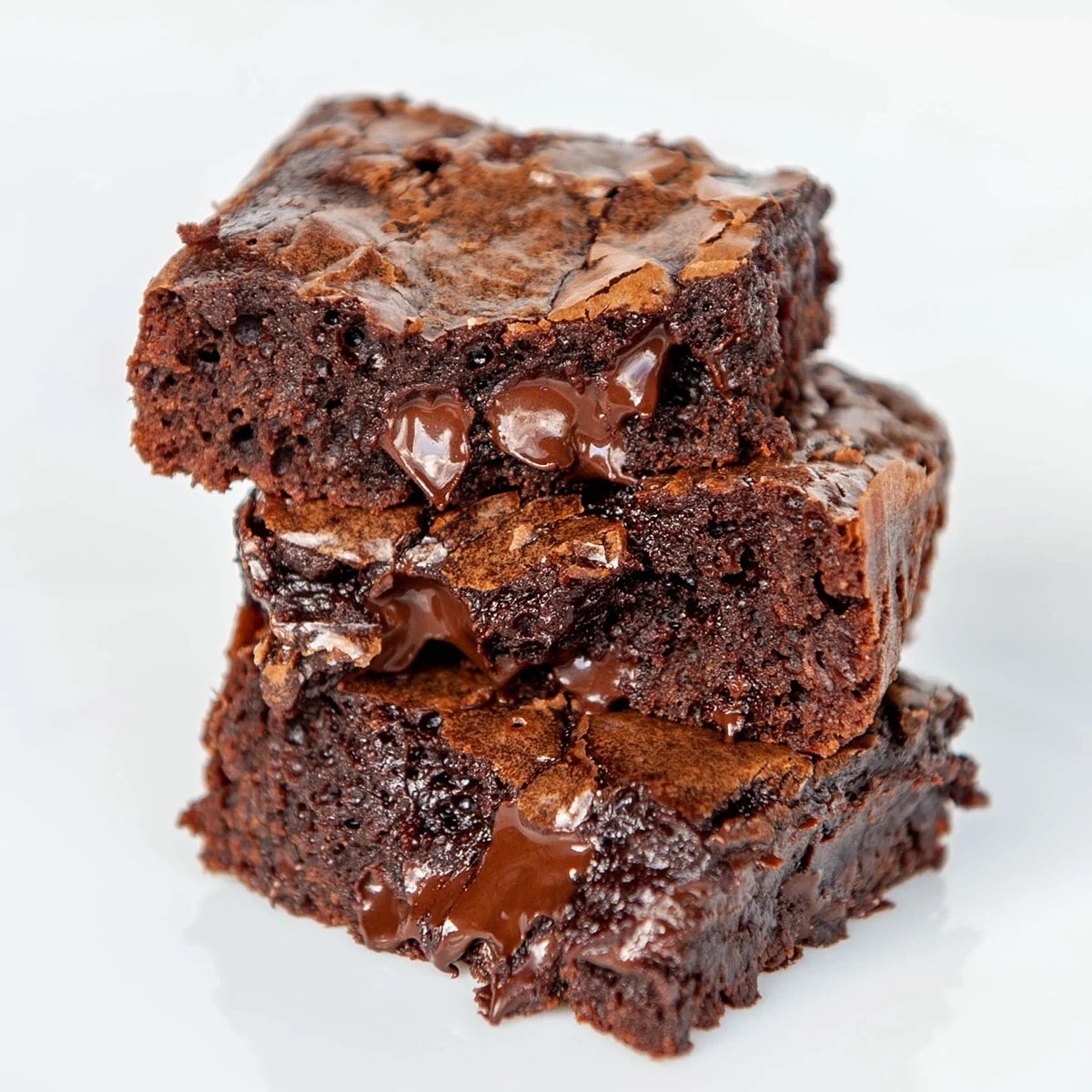Indulge your senses in the decadent richness of perfectly fudgy, nut-free brownies! This recipe unveils the secrets to creating intensely chocolatey squares, boasting a melt-in-your-mouth texture that will leave you craving more. We’ll explore ingredient choices, from the type of chocolate that dictates the ultimate fudgy depth to clever nut-free substitutions that maintain that perfect consistency. Get ready to embark on a baking journey that culminates in a symphony of flavors and textures, all without compromising on deliciousness.
From carefully selecting the highest-quality cocoa powder to mastering the art of melting chocolate for a smooth, glossy finish, each step is meticulously detailed. We’ll guide you through the process of achieving that coveted contrast – a perfectly crisp edge surrounding a luxuriously soft, fudgy center. Discover how to troubleshoot common baking pitfalls, ensuring your brownies turn out flawlessly every time. Whether you’re a seasoned baker or a kitchen novice, this recipe promises a rewarding experience and brownies that will impress even the most discerning palates.
Troubleshooting Common Baking Issues
Baking fudgy, nut-free brownies can present some challenges. Understanding potential problems and their solutions will help you achieve perfectly moist and delicious results every time. This section details common issues and offers practical advice for preventing and correcting them.
Several factors can affect the final texture and taste of your brownies. Over-baking leads to dry, crumbly brownies, while under-baking results in gooey, undercooked centers. Incorrect ingredient measurements or oven temperature variations can also contribute to less-than-ideal results. Altitude can also significantly impact baking, requiring adjustments to baking time and ingredient ratios.
Over-baking
Over-baked brownies are dry and crumbly, lacking the desired fudgy texture. This usually occurs when the brownies are left in the oven for too long, exceeding the recommended baking time. The edges will appear overly browned and cracked. To prevent over-baking, use a timer and start checking for doneness a few minutes before the minimum baking time is reached. A toothpick inserted into the center should come out with moist crumbs attached, not completely clean. If you accidentally over-bake your brownies, don’t despair! Adding a glaze or frosting can help to restore some moisture. Consider serving them warm with a scoop of vanilla ice cream, which can mask the dryness to some extent.
Under-baking
Under-baked brownies are gooey and undercooked in the center, often with a raw batter consistency. This happens when the brownies haven’t spent enough time in the oven to set properly. The center will appear uncooked, and the top may be unevenly browned. To prevent under-baking, ensure your oven is preheated to the correct temperature and use a reliable oven thermometer for accuracy. Check for doneness using the toothpick test; the toothpick should come out with a few moist crumbs clinging to it. If your brownies are under-baked, you can return them to the oven for a few more minutes, checking frequently to prevent over-baking.
Dry Texture
Dry brownies lack moisture and have a crumbly texture. This can result from over-baking, using too much flour, or insufficient liquid in the batter. To prevent dryness, carefully measure your ingredients, ensuring accuracy. Avoid over-mixing the batter, as this can develop the gluten in the flour, resulting in a tougher texture. Adding a tablespoon or two of extra melted chocolate or oil can add moisture to the batter.
Altitude Adjustments
Baking at high altitudes requires adjustments to recipes due to lower air pressure. Liquids evaporate faster, and batters rise more quickly. At higher altitudes, you may need to reduce the baking powder slightly, increase the liquid slightly, and reduce the baking time. For example, a recipe that calls for 1 teaspoon of baking powder at sea level might require only ¾ teaspoon at a high altitude. Always consult altitude-adjusted baking resources for precise adjustments based on your specific location.
Oven Variations
Ovens vary in their heating efficiency. Some ovens run hotter or cooler than the stated temperature. Using an oven thermometer is crucial for ensuring accurate temperature readings. If your oven consistently runs hot, reduce the baking temperature by 25°F (14°C). If it runs cool, increase the temperature by 25°F (14°C). Adjust baking times accordingly, checking for doneness frequently.
| Problem | Solution |
|---|---|
| Over-baked brownies (dry and crumbly) | Reduce baking time by 2-3 minutes next time. Add a glaze or frosting to restore moisture. |
| Under-baked brownies (gooey center) | Return to oven for a few more minutes, checking frequently. Use a toothpick test for doneness. |
| Dry brownies | Add 1-2 tablespoons of melted chocolate or oil to the batter. Ensure accurate ingredient measurements. |
| Brownies too dense | Reduce the amount of flour slightly next time. Make sure not to overmix the batter. |
| Brownies cracked on top | Reduce oven temperature slightly or use a lower baking pan. |
Flavor Variations and Enhancements

Elevating your fudgy, nut-free brownies to the next level involves exploring a world of flavor combinations and additions. The base recipe provides a rich, chocolatey foundation, but with a few strategic additions, you can create brownies that are uniquely yours, catering to diverse palates and preferences. This section delves into the art of enhancing your brownies’ flavor profile through various ingredients and techniques.
The possibilities for customization are vast. From subtle nuances to bold flavor explosions, you can tailor your brownies to match any occasion or personal taste. Experimenting with different extracts, powders, sweeteners, and mix-ins can dramatically transform the final product, resulting in a brownie experience that’s both delicious and memorable.
Flavor Enhancers: Extracts and Powders
Adding extracts and powders can subtly shift the flavor profile of your brownies without drastically altering their texture. A touch of vanilla extract adds warmth and a classic sweetness, complementing the deep chocolate notes. Espresso powder introduces a sophisticated bitterness that balances the sweetness and creates a mocha-like depth. Conversely, more cocoa powder intensifies the chocolate flavor, making the brownies even richer and more decadent. The subtle interplay of these ingredients can elevate the overall sensory experience. A teaspoon of vanilla extract brings a comforting warmth; a tablespoon of espresso powder lends a bold, coffee-infused complexity; and an extra ounce of unsweetened cocoa powder deepens the chocolate intensity.
Chocolate Chips and Mix-Ins
The addition of chocolate chips or other mix-ins offers a textural and flavor contrast to the fudgy brownie base. Semi-sweet chocolate chips provide a classic combination of sweet and slightly bitter chocolate, complementing the brownie’s inherent richness. Milk chocolate chips offer a softer, sweeter counterpoint. Dark chocolate chips, with their intense bitterness and higher cocoa content, introduce a sophisticated edge. Beyond chocolate chips, consider adding dried cranberries for a tart sweetness, chopped pretzels for a salty crunch, or even a swirl of peanut butter (ensure it’s nut-free if needed) for a creamy, indulgent twist. Imagine the contrasting textures – the chewy brownie, the burst of a cranberry, the satisfying crunch of a pretzel.
Sweetener Impact on Taste and Texture
The choice of sweetener significantly influences both the taste and texture of your brownies. Granulated sugar offers a familiar sweetness and contributes to a slightly crisp edge. Brown sugar lends a deeper, molasses-like flavor and creates a chewier texture. Honey or maple syrup introduces a more complex sweetness and adds moisture, resulting in a softer, more tender brownie. Using a combination of sweeteners can yield unique flavor profiles and textures. For example, a blend of granulated and brown sugar provides both sweetness and chewiness, while adding honey results in a moist, subtly caramelized brownie.
Creative Flavor Variations
The following list presents several creative flavor combinations, showcasing the versatility of this basic brownie recipe.
- Mint Chocolate Chip Brownies: The refreshing coolness of mint extract perfectly complements the richness of chocolate. Adding Andes mint candies provides a delightful textural contrast and an intense mint flavor.
- Salted Caramel Brownies: A swirl of homemade or store-bought salted caramel sauce creates a decadent flavor combination. The saltiness balances the sweetness, enhancing the overall taste experience.
- Orange Chocolate Brownies: Zest and juice from an orange provide a bright, citrusy note that cuts through the richness of the chocolate. A touch of orange extract further enhances this vibrant flavor profile.
- Espresso Chip Brownies: Combining espresso powder with semi-sweet chocolate chips creates a sophisticated mocha-flavored brownie. A dusting of cocoa powder adds a visually appealing touch.
Creating fudgy, nut-free brownies is a journey of culinary exploration, where precision meets indulgence. By understanding the role of each ingredient and mastering the techniques Artikeld, you’ll unlock the secret to consistently achieving that perfect texture and flavor. So gather your ingredients, embrace the process, and prepare to be captivated by the aroma and the sheer deliciousness of your homemade, nut-free brownie masterpiece. The result? A batch of brownies so rich and satisfying, they’ll become your new go-to dessert, guaranteed to impress friends and family alike. Enjoy!
Question & Answer Hub
Can I use different types of chocolate chips?
Absolutely! Semi-sweet, dark chocolate, or even milk chocolate chips can be used, each imparting a unique flavor profile. Dark chocolate will yield a more intense, bitter-sweet brownie, while milk chocolate will result in a sweeter treat.
How long do the brownies stay fresh?
Stored in an airtight container at room temperature, your brownies will remain moist and delicious for up to 3-4 days. For longer storage, you can freeze them for up to 2 months.
What if my brownies are dry?
Dry brownies are often a sign of over-baking. Next time, reduce the baking time slightly and check for doneness earlier. You can also try adding a tablespoon or two of extra melted butter or oil to the batter.
Can I make these brownies ahead of time?
Yes! You can bake the brownies a day or two in advance. Store them in an airtight container at room temperature until ready to serve.


